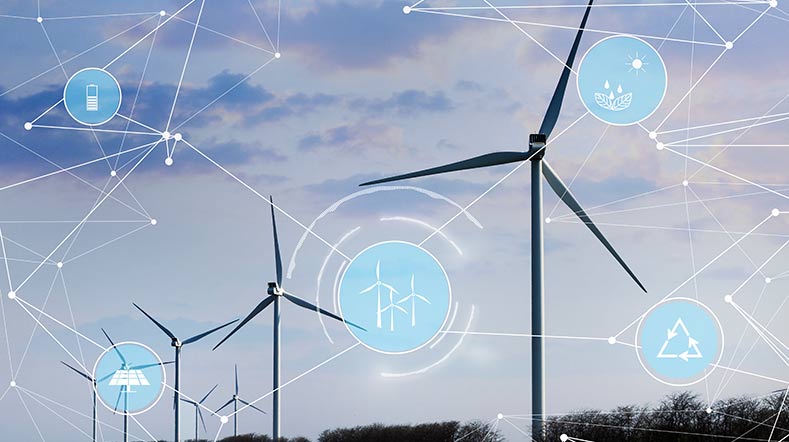Trends & developments in digital society: 5G
5G will be faster, smarter, more stable, and more secure than 4G. TNO is working intensively on this next generation of mobile technology, which will make an important contribution to solutions for major social challenges. For example, better healthcare, security services, more efficient food production, industry, and optimal public transport. This is what our society will look like with 5G.
5G in society
In an emergency, it is crucial to quickly assess the urgency and location for treating the patient. More and more ambulance services want to further improve this pre-hospital triage.
Thanks to a high-quality video, audio, and data connection with an ambulance, an ambulance medical manager or specialist can remotely observe, diagnose, and advise. This allows paramedic ambulance staff to make more efficient decisions and reduces the risk of patients being taken to a specialist hospital unnecessarily.
In the coming years, TNO will work together with its partners on the further development of this application in the 5G HEART project. For example, we are working on the development and application of TNO's 5GSP (pdf) (5G Service Platform) to be able to set up high-quality connections for ambulances in the 5G network.
Over the next 30 years, we will have to grow 70 per cent more food to feed the world's growing population. This can only be achieved through the use of new technologies. For example drones for crop inspection, a sensor network for water quality measurement, a hoeing robot, and cows with 5G collars. TNO is involved in many of these projects.
However, large-scale application of 5G technology is still pending. The deadlock has nothing to do with the technology itself, but with the fact that there is no global coverage yet in rural areas that are important for agriculture. To get 5G innovation off the ground with the major agricultural manufacturers, TNO is working on collaboration between various parties.
Avoiding a 5G implementation deadlock in the agriculture sector (pdf) (pdf)
Starting in 2030, global railway organisation UIC will switch to 5G. With the Future Railway Mobile Communication System (FRMCS), the rail sector will then have a future-proof communication infrastructure.
This transition poses considerable challenges. Should the rail sector set up its own 5G network? How do you make such a network reliable and secure? And what innovative business models are emerging thanks to 5G? Read more about the opportunities of 5G for railways in our report (pdf).
5G has much to offer the rail sector, such as optimal reliability and security for operational services. Thanks to gigabit communication services, travellers will benefit from a fast internet connection while travelling, and there will be optimal connectivity for on-board systems. Data collection through a variety of sensors will simplify equipment management and maintenance, while allowing accurate measurement of occupancy.
Collaboration between different stakeholders is essential to fully exploit the potential of 5G. That is why ProRail and TNO are working together on a 5G roadmap for the rail sector.
5G will have a major impact on the roll-out of Virtual Reality (VR) applications. For example, TNO is researching '5G edge computing': servers that can quickly process and transmit data and images. This technology will continue to improve and optimise the VR experience in the coming years.
We will see more and more applications of 5G in the VR world, allowing for realistic, holographic images. Through VR or AR (Augmented Reality), two people can interact as if they were really together in a room. For example, TNO is doing pioneering research in the field of Social XR, linking VR or AR to a communication platform. In this way, even if a physical visit is not possible, the elderly can still maintain virtual contact, for example with family members.
The holographic connection can also be useful at work, for remote advice for example. If a machine breaks down in Taiwan, it can still be repaired quickly thanks to a holographic phone call with a remote expert.
Together with Hanze University of Applied Sciences in Groningen and the North Netherlands Police, TNO has been working on a prototype for a smart safety vest for the police. Equipped with a camera, a 5G modem, and a vibration actuator, the vest gives the user an extra pair of ‘eyes’ on the back to ‘see’ from behind.
With the help of an AI algorithm that uses computing power close to a 5G antenna, a potential threat, such as a drawn knife, can be detected. A message is then sent back to the vest within a second, alerting the wearer with vibrations. The result is a technology-based, smart safety vest that provides additional safety for emergency services.
Want to know more about the 5G safety vest? Please contact Marc van Dijk.
At TNO, we’re doing a great deal of research into 5G applications on the road. For example, various projects are underway to prepare the 5G infrastructure for self-driving cars. With 5G, driving will become safer and more efficient. Sensors and data will make vehicles more ‘aware’ of their surroundings, enabling them to make the right decisions faster.
With the 5G-MOBIX project, in collaboration with KPN and others, we’re looking at what will happen to 5G communication when self-driving cars cross the border into Germany. How do you ensure a smooth transition between the two countries and networks?
5G also offers opportunities for road transport, such as in truck platooning. This means that lorries travel automatically and a short distance apart in convoys of 3 to 5 vehicles. This will make road transport faster, cheaper, cleaner, and safer. For many years, direct communication via ITS-G5 has been used for this purpose. Thanks to 5G, the adoption of truck platooning on public roads can be accelerated. The lorries will receive additional information via this network, or be able to share information about the situation on the road, reducing the risk of accidents.
This page gives a good idea of the many valuable applications of 5G for our society. Yet the possibilities of 5G go even further than these examples. An important development is the Internet of Things (IoT), which will really take off thanks to 5G. Devices that frequently need information will be connected to the 5G network. Or take, for example, the further development of machine-to-machine communication, where devices are connected to each other, making offices, installations, and devices smarter and more productive.
The conclusion is that the 5G network has countless innovative applications in store for us, the impact of which on our lives as consumers or as entrepreneurs we can barely imagine.
More information about the Internet of Things
Challenges to 5G
In addition to the many opportunities, there are also numerous challenges that we must overcome in order for the network to be adopted en masse. For example, much remains to be done to make the 5G infrastructure suitable for large-scale use, so that drones and self-driving cars, for example, can use 5G. A reliable and stable network is required for this type of application. Telecom companies, in particular, can play an important role in this.
At TNO, we’re also focusing on the impact of 5G on privacy and security. How secure is the data being sent? And who owns the data? To answer these fundamental questions, TNO will conduct research and gather new knowledge in the coming years to enable a smooth and promising implementation of 5G in our society.
Developments 6G to start
While developments for 5G are still in full swing, work is already underway on the next generation: 6G. Wondering what opportunities 6G will bring us?
Get inspired
TNO to investigate 5G technology in the North Sea


6G




